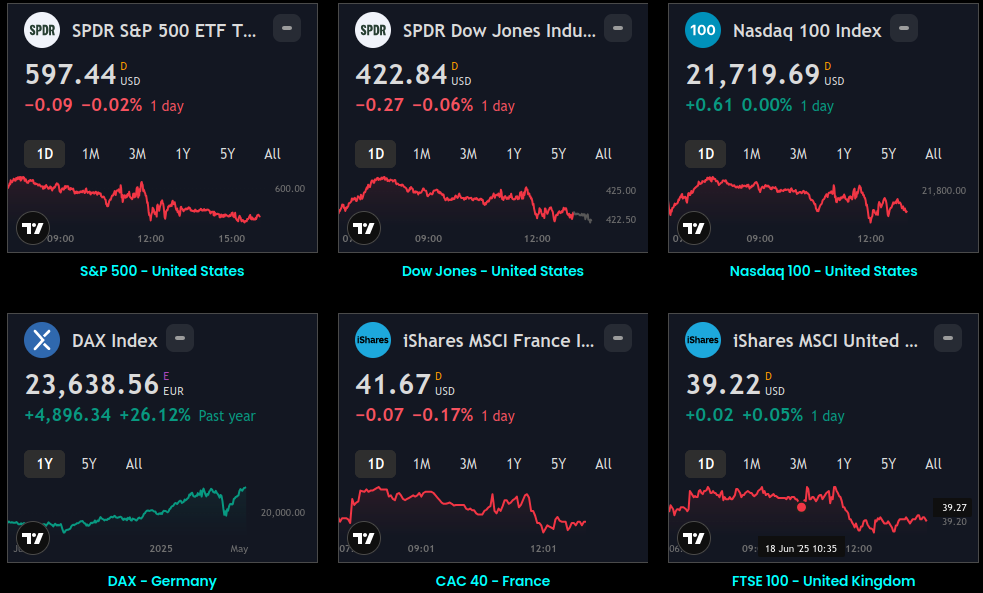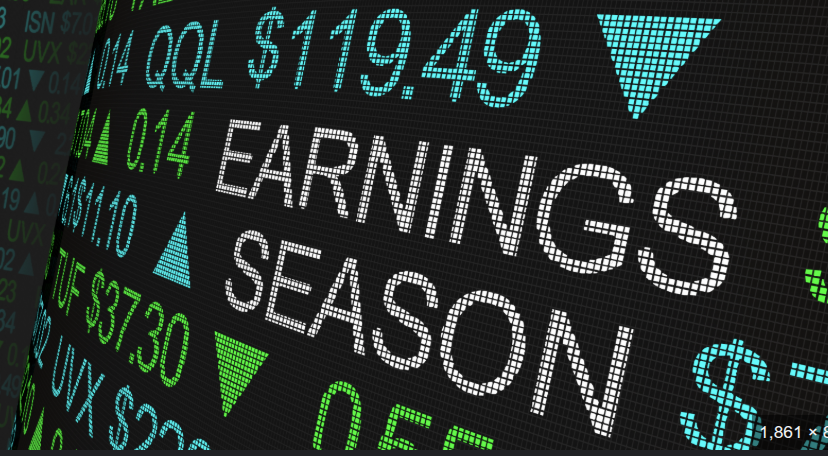WTF Dailies October 01, 2025
US stock futures pulled back as the US government entered a shutdown beginning Wednesday at 12:01 a.m. ET. At 12:01 Wednesday morning, the government entered shutdown after the Senate struck down both a Democratic and a Republican bill to keep the government funded.

- US stock futures pulled back as the US government entered a shutdown beginning Wednesday at 12:01 a.m. ET.
- At 12:01 Wednesday morning, the government entered shutdown after the Senate struck down both a Democratic and a Republican bill to keep the government funded.
- If a stoppage proceeds as expected, it will mark the first government shutdown in nearly seven years. Federal agencies will have to implement contingency plans and send scores of workers home amid threats from President Trump that "a lot" of firings are to come.
- Markets are watching the developments closely. Among the agencies set to be frozen by a shutdown is the Bureau of Labor Statistics (BLS), which releases economic data key to Federal Reserve policy decisions. This week, BLS was set to release the September jobs report on Friday. Fed officials and Wall Street have been eagerly awaiting the update as recent economic data has shaken confidence in more rate cuts coming this year.
- However, in the event of a shutdown, all signs point to the jobs report not arriving as scheduled. BLS has said that it plans to "completely cease operations" and temporarily go from a workforce of 2,055 to just one full-time employee.
- Most Asian stocks advanced on Wednesday, tracking overnight gains in Wall Street and as strength in technology shares offered support.
- Japanese markets lagged as a Bank of Japan survey showed improving confidence among major local manufacturers– a trend that could give the central bank more impetus to hike interest rates.
- Regional trading volumes were dulled by holidays in China and Hong Kong for the National Day. Mainland China markets will remain shut until the middle of next week.
- Focus was also on a Reserve Bank of India interest rate decision, with the central bank widely expected to loosen policy further while leaving its benchmark rate unchanged.
- Asian markets took some positive cues from a stronger overnight close on Wall Street. But this momentum was seen running dry in the face of an imminent U.S. government shutdown, after bipartisan efforts to approve more funding largely failed.
- Tech-heavy Asian bourses were the best performers on Wednesday, with South Korea’s KOSPI up 0.8%.
- Tech stocks tracked overnight gains in their U.S. peers, which were encouraged by lingering optimism over the artificial intelligence trade. An element of bargain buying also aided the sector, after it clocked steep losses through most of September.
- But overall gains in tech were limited by growing uncertainty over the path of U.S. interest rates, after Dallas Federal Reserve President Lorie Logan flagged caution over more interest rate cuts. Logan’s comments echo those from a host of other Fed officials who have questioned the need for aggressive interest rate cuts amid relative resilience in the U.S. economy.
- Japan’s Nikkei 225 and TOPIX indexes were the worst performers in Asia, falling 1.1% and 1.8%, respectively.
- Local stocks were quashed chiefly by increasing concerns over an interest rate hike by the BOJ, after a survey showed increasing confidence among the country’s biggest manufacturers.
- The BOJ’s “tankan” survey suggested that Japan’s export-heavy economy was not as badly affected by U.S. trade tariffs as markets had feared, giving the central bank more headroom to hike interest rates.
- The central bank is widely expected to consider hiking rates during a meeting in late-October.
- Expectations of a BOJ rate hike buoyed the yen, which in turn weighed on major export stocks.
- Broader Asian markets were a mixed bag. Singapore’s Straits Times index rose 0.6% on strength in tech shares, while Australia’s ASX 200 fell 0.3%, extending losses after the Reserve Bank of Australia struck a hawkish tone on Tuesday.
- Futures for India’s Nifty 50 index pointed to a flat open, with the index treading water this week in anticipation of a RBI decision on Wednesday.
- The RBI is widely expected to leave benchmark rates unchanged, but is expected to loosen monetary policy further by trimming its cash reserve ratio.
- The central bank is expected to present a dovish outlook in the face of growing headwinds for the Indian economy, especially from steep U.S. trade tariffs.
Market Close
- At midnight on September 30, the U.S. government officially shut down for the 21st time since 1976. The shutdown began after the Senate was unable to reach 60 votes to pass a stopgap measure, known as a continuing resolution, or the necessary appropriation bills to keep federal agencies funded. The Republican-backed bill ultimately failed in a 55 to 45 vote in the Senate.
- The key issue for Democrats centered around health care. The party called for an extension of ACA (Affordable Care Act) tax credits that are set to expire and for a reversal of cuts to Medicaid that have been enacted by the administration. Democrats also opposed spending cuts to government health agencies.
- As a result of the lapse in funding, nonessential parts of the government will shut down, furloughing workers and halting certain services until funding is restored. The CBO (Congressional Budget Office) estimates that about 750,000 government employees will be furloughed in this shutdown. It is important to note, however, that essential government services, including Social Security, Medicare, Medicaid, law enforcement, and air travel safety all continue to operate.
- History offers good perspective on the economic and market impacts of government shutdowns. Since 1976 there have been 20 government shutdowns lasting for a day or more. The most recent one in December 2018 lasted 35 days, setting a record as the longest in U.S. history. From an economic standpoint, a shutdown can drive a short-term slowdown in growth but a relatively quick recovery in activity in the subsequent months, as furloughed workers typically receive backpay once operations resume. In other words, a shutdown would displace or delay spending and economic activity, not eliminate it. Estimates point to potential loss of 0.1% - 0.2% from quarterly GDP growth for each week of closures. The longer the disruption, the bigger the impact, but the economic damage would likely be minimal in the context of our $30 trillion economy.
- And from a market perspective, the uncertainty that a potential government shutdown introduces can lead to a short-term uptick in volatility, especially after a long stretch of strong returns. But as history shows, government shutdowns have had little lasting impact on equity performance. Stocks were positive half the time during the government closures and were higher in most cases three and six months later. More broadly, market performance tends to be driven more by the outlook for economic growth, earnings and interest rather than the political landscape.
- There are a couple of key unique factors in the current U.S. government shutdown. The first is that the White House's Office of Management and Budget (OMB) has warned agencies to prepare not only for temporary furloughs but also for permanent layoffs if a shutdown occurs. Job cuts could lead to a more permanent impact on the economy and stall the recent momentum in U.S. economic growth, although it remains to be seen whether and to what extent the administration carries out these plans.
- The other somewhat unique factor to consider is that BLS data will be suspended over the shutdown period. This includes this Friday's U.S. nonfarm-jobs report, as well as the consumer price index (CPI) inflation report due on October 15. The lack of visibility around key labor market and inflation data comes at a critical time, as the Federal Reserve prepares for its next FOMC meeting and interest-rate decision on October 30. While there are other metrics to follow, like the ADP private-payrolls data and the Chicago Fed labor indicators, there will be some absence of economic-data transparency in the weeks ahead.
- Overall, the U.S. government shutdown comes at a unique time for equity investors as well. The S&P 500 has rallied over 30% since the April 8 lows, without a 5% or higher correction. We are entering a bit of a quiet period in data ahead of third-quarter earnings season, October has historically been a volatile month for markets, and markets now will be facing headlines around the U.S. shutdown. We could see market volatility in the weeks ahead, as investors potentially look for reasons to take profits and digest the recent gains. Keep in mind, however, that pullbacks are normal in any given year, and we would not expect a correction to morph into a deep or prolonged bear market. These usually occur when the economy is heading toward recession or the Federal Reserve is raising interest rates, neither of which we see on the horizon for now. And we continue to believe that market pullbacks can be opportunities to diversify, rebalance or add to portfolios, especially as we do see positive drivers for the economy heading into 2026, including Federal Reserve rate cuts, some fiscal boost from the U.S. tax bill, and potential for deregulation and more capital-markets activity.
Global Indices:

Active Stocks:

Stocks, ETFs and Funds Screener:

Forex:

CryptoCurrency:

Events and Earnings Calendar:

This daily briefing is curated from a wide range of reputable sources including news wires, research desks, and financial data providers. The insights presented here are a synthesis of key developments across global markets, intended to inform and spark thought.
No Investment Advice: This content is for informational purposes only and does not constitute investment advice, recommendation, or endorsement.
Timing Note: Each edition is assembled based on the market context available at the time of writing. Timing, emphasis, and interpretations may vary depending on global developments and publishing windows.
















